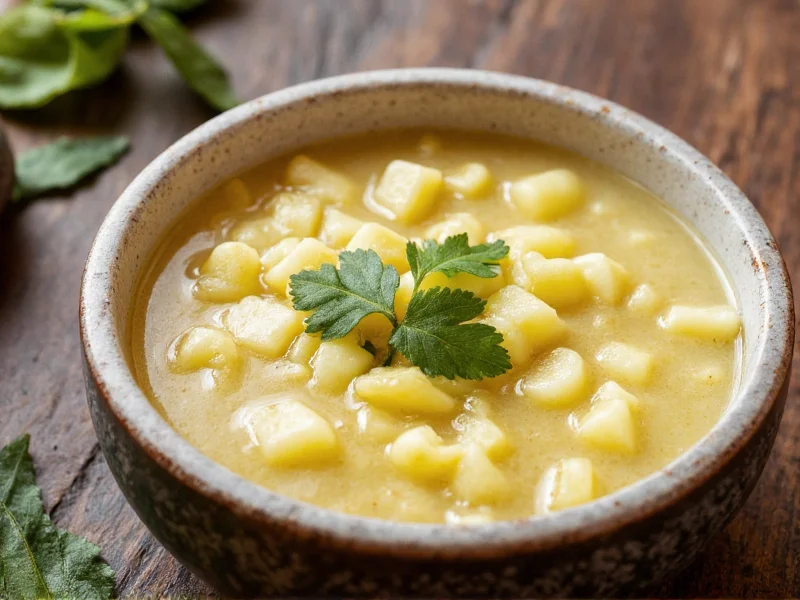Winter melon soup represents one of Asia's most versatile culinary traditions, spanning multiple cultures with distinctive regional variations. Unlike its name suggests, this soup serves as a cooling summer dish in many Asian countries, prized for its ability to combat heat while providing essential hydration. The winter melon itself—technically a fruit despite its name—contains over 90% water, making it an exceptional base for light, nourishing broths that never feel heavy.
The Cultural Significance of Winter Melon Soup
Across East and Southeast Asia, winter melon soup appears in ceremonial contexts and everyday meals alike. In Chinese tradition, chefs often serve this soup during hot summer months to balance the body's internal temperature according to traditional medicine principles. Vietnamese cuisine features canh bí as a standard component of family meals, while Thai preparations like tom saap incorporate distinctive aromatic elements including lemongrass and kaffir lime leaves.
Chefs typically prepare winter melon soup using either a clear broth method or a more complex double-boiling technique common in Cantonese cooking. The melon's neutral flavor readily absorbs surrounding seasonings while maintaining its delicate texture when properly cooked. Unlike many vegetables, winter melon improves in flavor after several days of storage, making it ideal for meal preparation.
Nutritional Profile and Health Benefits
Winter melon soup delivers remarkable nutritional advantages beyond its pleasant taste. The primary ingredient contains significant potassium, vitamin C, and B-complex vitamins while remaining extremely low in calories—approximately 15 calories per 100 grams. Traditional Chinese medicine practitioners have long recommended winter melon soup for its diuretic properties and ability to support kidney function.
| Nutrient | Amount per Serving (250g) | Health Benefit |
|---|---|---|
| Calories | 40 | Supports weight management |
| Potassium | 200mg | Regulates blood pressure |
| Vitamin C | 12mg | Boosts immune function |
| Dietary Fiber | 2g | Aids digestion |
| Water Content | 225g | Promotes hydration |
Mastering Winter Melon Soup Preparation
Selecting the right winter melon proves crucial for authentic results. Look for specimens with smooth, waxy skin and substantial weight relative to size—these indicate optimal water content. Avoid melons with soft spots or cracks, which suggest overripeness. When properly stored in a cool, dark place, whole winter melons maintain freshness for several months.
Preparation requires careful attention to detail. First, remove the tough outer rind using a sharp vegetable peeler, then cut the melon in half to scoop out the seeds and fibrous center. Cut the flesh into uniform 1-inch cubes to ensure even cooking. For traditional Chinese preparations, many chefs recommend briefly blanching the melon pieces in boiling water before adding them to the broth—this step removes any potential bitterness while preserving texture.
Authentic Winter Melon Soup Recipe Variations
The classic Cantonese winter melon soup features minimal ingredients to highlight the melon's delicate flavor. Combine 500g winter melon cubes with 1.5 liters of chicken or vegetable broth, two slices of fresh ginger, and a small handful of dried scallops for umami depth. Simmer gently for 20 minutes until the melon turns translucent but still holds its shape. Finish with a pinch of white pepper and fresh cilantro.
Vietnamese canh bí typically includes shrimp or pork for protein. Sauté 200g ground pork with garlic until browned, then add 1.5 liters water, fish sauce to taste, and 500g winter melon. Simmer until tender, then stir in fresh dill and scallions just before serving. Thai versions often incorporate aromatic ingredients like galangal, kaffir lime leaves, and straw mushrooms for added complexity.
Avoiding Common Preparation Mistakes
Many home cooks make the critical error of overcooking winter melon, resulting in a mushy texture that loses its distinctive character. The melon should remain slightly firm when properly cooked—typically 15-20 minutes in simmering broth. Adding salt too early can draw out excessive moisture, so many chefs recommend seasoning toward the end of cooking.
Another frequent mistake involves improper storage. While winter melon soup improves in flavor after one day, the melon pieces continue to soften in the broth. For best results, store the broth and melon separately, combining them when reheating. This approach preserves the ideal texture when serving leftovers.
Serving Suggestions and Pairing Recommendations
Winter melon soup serves beautifully as both a standalone light meal and as part of a larger spread. In Chinese dining tradition, it typically appears as one component of a multi-dish meal, complementing stir-fried vegetables and rice. The soup's mild flavor makes it an excellent palate cleanser between stronger-tasting dishes.
For modern interpretations, consider adding fresh herbs like Thai basil or mint for brightness, or incorporating edible flowers for visual appeal. Some contemporary chefs experiment with coconut milk for a creamy variation that maintains the soup's cooling properties while adding richness. Regardless of preparation method, serve winter melon soup hot but not boiling—the ideal temperature allows full appreciation of its subtle flavors.











 浙公网安备
33010002000092号
浙公网安备
33010002000092号 浙B2-20120091-4
浙B2-20120091-4